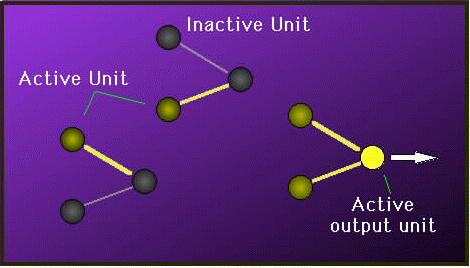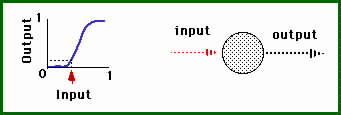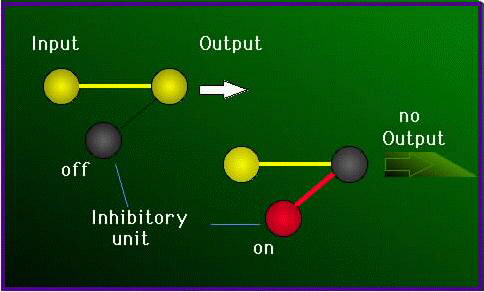In the brain, a typical neuron collect signals from others through a host of fine structures called dendrites. The neuron sends out spikes of electrical activity through the axon (the out put and conducting structure) which can split into thousands of branches. At the end of each branch, a synapse converts the activity from the axon into electrical effects that inhibit or excite activity on the contacted (target) neuron. When a neuron receives excitatory input that is sufficiently large compared with its inhibitory input, it sends a spike of electrical activity (an action potential) down its axon.
Learning occurs by changing the effectiveness of the synapses so that the influence of one neuron on another changes.
These general properties of neurons can be abstracted in order to study the dynamical behavior of large ensembles of neuronal cells. Thus there have been many interesting attempts to mimic the brains learning processes by creating networks of artificial neurons.
This approach consist in deducing the essential features of neurons and their interconnections and then, programming a computer to simulate these features.

Artificial neural networks are typically composed of inter connected units which serve as model neurons.
The synapse is modeled by a modifiable weight associated with each particular connection. Most artificial networks do not reflect the detailed geometry of the dendrites and axons, and they express the electrical output of a neuron as a single number that represents the rate of firing.
Each unit converts the pattern of incoming activities that it receives into a single outgoing activity that it sends to other units. This conversion is performed in two steps :
* First, it multiplies each incoming activity by the weight on the connection and adds together all these weighted inputs to get a total input.
 * Second
* Second, the unit uses an input output function that transform the total input into an outgoing activity.

The global behavior of an artificial neural network depends on both the weight and the input- output function that is specified for the unit. This function typically falls into one of three categories: linear, threshold or sigmoid. For linear units, the output activity is proportional to the total weighted input- For threshold units the output is set at one of two levels, depending on whether the total input is greater than, or less than some threshold value. In sigmoid units, the output varies continuously but not linearly as the input changes. Sigmoid units bear a greater resemblance to real neurons than linear or threshold units.
For a neural network to perform a specific task the connection between units must be specified an the weights on the connections must be set appropriately. The connections determine whether it is possible for one unit to influence another. The weights specify the strength of the influence.

Source :
Unam



